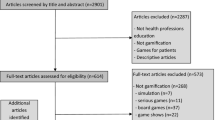Abstract
Team-based design courses focused on products for people with disabilities have become relatively common, in part because of training grants such as the NSF Research to Aid Persons with Disabilities course grants. An output from these courses is an annual description of courses and projects but has yet to be complied into a “best practices guide,” though it could be helpful for instructors. To meet this need, we conducted a study to generate best practices for assistive technology product development courses and how to use these courses to teach students the fundamentals of innovation. A full list of recommendations is comprised in the manuscript and include identifying a client through a reliable clinical partner; allowing for transparency between the instructors, the client, and the team(s); establishing multi-disciplinary teams; using a process-oriented vs. solution-oriented product development model; using a project management software to facilitate and archive communication and outputs; facilitating client interaction through frequent communication; seeking to develop professional role confidence to inspire students’ commitment to engineering and (where applicable) rehabilitation field; publishing student designs on repositories; incorporating both formal and informal education opportunities related to design; and encouraging students to submit their designs to local or national entrepreneurship competitions.
Similar content being viewed by others
References
Atman, C. J., D. H. Kilgore, and A. McKenna. Characterizing design learning: a mixed-methods study of engineering designers’ use of language. J. Eng. Educ. 97(3):309–326, 2008.
Bertozzi, N., C. Hebert, J. Rought, and C. Staniunas. Implementation of a three-semester concurrent engineering design sequence for lower-division engineering students. In: Proceedings of the 2005 American Society for Engineering Education Annual Conference & Exposition, 2005.
Carlson, L. E., and J. F. Sullivan. Hands-on engineering: learning by doing in the integrated teaching and learning program. Int. J. Eng. Educ. 15(1):20–31, 1999.
Catalano, J. D., P. Wray, and S. Cornelio. Compassion practicum: a capstone design experience at the United States Military Academy. J. Eng. Educ. 89(4):471–474, 2000.
Cooper, R. An Introduction to Rehabilitation Engineering. New York: Taylor and Francis, p. 449, 2007.
Council of Europe Committee of Ministers. Resolution on the introduction of the principles of universal design into the curricula of all occupations working on the built environment, 15 February 2001. http://www.logos-net.net/ilo/159_base/instr/coe_adj.htm#s12.
Davis, D. C., S. W. Beyerlein, and I. T. Davis. Deriving design learning outcomes form a professional profile. Int. J. Eng. Educ. 22(3):439–446, 2006.
Dekker, D., S. Sundarrao, and R. Dubey. A great team: Capstone design conference. In: Engineering Capstone Design Course Conference, 2007.
de Vere, I., G. Melles, and A. Kapoor. Product design engineering: a global education trend in multidisciplinary training for creative product design. J. Eng. Educ. 35(1):33–43, 2010.
Dym, C. L., M. M. Gilkeson, and J. R. Phillips. Engineering design at Harvey Mudd College: innovation institutionalized, lessons learned. J. Mech. Des. 134(8):1–10, 2012.
Enderle, J. D. An overview of the National Science Foundation program on senior design projects to aid persons with disabilities. Int. J. Eng. Educ. 15(4):288–297, 2000.
Enderle, J. D. National Science Foundation Engineering Senior Design Projects For Persons with Disabilities, 2010. http://nsf-pad.bme.uconn.edu/.
Erlandson, R., J. Enderle, and J. Winters. Educating engineers in universal and accessible design. In: Medical Instrumentation, edited by J. Winters, and M. Follette Story. Boca Raton, FL: CRC Press, Inc., 2006, pp. 123–145.
Erlandson, R. F. Universal and Accessible Design for Products, Services, and Processes. Boca Raton, FL: CRC Press, 2008.
Gentili, K. L., J. Hannan, R. W. Crain, D. C. Davis, M. S. Trevisan. A process oriented class in engineering design: how it works. In: Frontiers in Education Conference, 27th Annual Conference. 2, 1997, pp. 972–980.
Georgia Tech Institute of Technology. Georgia Tech Design Course Guiding Principles. www.otl.gatech.edu.
Goldberg, J. Liability issues with assistive technology projects. IEEE Pulse 4–5:2010, 2010.
Hannukainen, P., and K. Holtta-Otto. Identifying customer needs: disabled persons as lead users. In: ASME 18th International Conference on Design Theory and Methodology, 4(a), 2006, pp. 243–251.
Instructables. Autodesk Industries, 2012. http://www.instrucatables.com.
Joo, T., and J. Mark. An evaluation of tools supporting enhanced student collaboration. In: 38th ASEE/IEEE Frontiers in Education Conference, 2008, pp. F3H7–F3H12.
King, P. Design and biomedical education. Int. J. Eng. Educ. 15(4):282–287, 1999.
Mann, D. D., J. Ripat, and A. Quanbury. Interprofessional teaching teams: addressing emerging areas in biosystems engineering using a client-based learning project. Int. J. Eng. Educ. 23(4):691–697, 2007.
May-Newman, K., P. Newman, and U. Miyares. Senior design in assistive technology: Opportunities for technology transfer. In: American Society for Engineering Education, 2007.
Stern, P., and E. Trefler. An interdisciplinary problem-based learning project for assistive technology education. Assist. Technol. 9(2):152–157, 1997.
Terpenny, J. P., R. M. Goff, M. P. Vernon, and W. R. Green. Utilizing assistive technology design projects and interdisciplinary teams to foster inquiry and learning in engineering design. Int. J. Eng. Educ. 22(3):609–616, 2006.
Thingiverse. MakerBot LLC, 2012. http://www.thingiverse.com.
University of Minnesota Department of Mechanical Engineering. Capstone Design Project, 2012. http://www.me.umn.edu/courses/me4054/advisors/solicitation.html.
University of Pittsburgh. Patent Policy 11-02-01, 2001. http://www.cfo.pitt.edu/policies/policy/11/11-02-01.html.
Valero-Gomez, A., J. Gonzalez-Gomez, V. Gonzalez-Pacheco, and M. A. Salichs. Printable creativity in plastic valley UC3M. In: Global Engineering Education Conference (EDUCON), 2012 IEEE, 2012, pp. 1–9.
Acknowledgments
This project was supported by the Human Engineering Research Laboratories, National Collegiate Innovators and Inventors Alliance, National Science Foundation Quality of Life Technology Center, and VA Center of Excellence on Wheelchairs and Rehabilitation Engineering, VA Pittsburgh Healthcare System.
Author information
Authors and Affiliations
Corresponding author
Additional information
Associate Editor John Desjardins oversaw the review of this article.
Rights and permissions
About this article
Cite this article
Goldberg, M.R., Pearlman, J.L. Best Practices for Team-Based Assistive Technology Design Courses. Ann Biomed Eng 41, 1880–1888 (2013). https://doi.org/10.1007/s10439-013-0798-2
Received:
Accepted:
Published:
Issue Date:
DOI: https://doi.org/10.1007/s10439-013-0798-2




